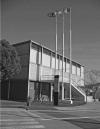Resumen
Desde hace varias décadas, la arquitectura del movimiento moderno ha adquirido un nuevo valor patrimonial comobien cultural en su condición de elemento clave para la sociedad y la cultura del siglo xx. Desde el surgimiento de laposmodernidad a finales de la década de los sesenta del siglo pasado, el movimiento moderno adquiere la condiciónde histórico y comienza a experimentar un profundo proceso de mitificación que se materializará en los diversosintentos de reconstrucción de obras clave desaparecidas –Pabellón alemán de Mies van der Rohe, Pabellón L’EspritNouveau de Le Corbusier y Pabellón de la urss de Melnikov, entre otros–, fenómeno que se produce simultáneamentecon las restauraciones de edificios paradigmáticos como la casa de Rietveld en Utrecht, la Maison Double de Le Corbusiero la villa del Dr. Müller de Adolf Loos en Praga, donde se ha buscado conscientemente la vuelta al original.Este tema, prácticamente ignorado en la historiografía contemporánea, es abordado en este artículo desde una tripleperspectiva: en primer lugar, la ineludible recopilación de las fuentes y estudios publicados sobre la conservación yrestauración de la arquitectura del movimiento moderno, con particular atención a la bibliografía italiana; en segundolugar, el debate en torno a los criterios de restauración en el que necesariamente debe contextualizarse el fenómenode la reconstrucción de obras desaparecidas y, por último, el análisis detallado de los casos más significativos, conespecial detenimiento en los realizados en España.La revista Apuntes se encuentra registrada bajo la licencia Creative Commons Reconocimiento 4.0 Internacional. Por lo tanto, esta obra se puede reproducir, distribuir y comunicar públicamente en formato digital, siempre que se reconozca el nombre de los autores y a la Pontificia Universidad Javeriana. Se permite citar, adaptar, transformar, autoarchivar, republicar y crear a partir del material, para cualquier finalidad (incluso comercial), siempre que se reconozca adecuadamente la autoría, se proporcione un enlace a la obra original y se indique si se han realizado cambios. La Pontificia Universidad Javeriana no retiene los derechos sobre las obras publicadas y los contenidos son responsabilidad exclusiva de los autores, quienes conservan sus derechos morales, intelectuales, de privacidad y publicidad.
El aval sobre la intervención de la obra (revisión, corrección de estilo, traducción, diagramación) y su posterior divulgación se otorga mediante una licencia de uso y no a través de una cesión de derechos, lo que representa que la revista y la Pontificia Universidad Javeriana se eximen de cualquier responsabilidad que se pueda derivar de una mala práctica ética por parte de los autores. En consecuencia de la protección brindada por la licencia de uso, la revista no se encuentra en la obligación de publicar retractaciones o modificar la información ya publicada, a no ser que la errata surja del proceso de gestión editorial. La publicación de contenidos en esta revista no representa regalías para los contribuyentes.


